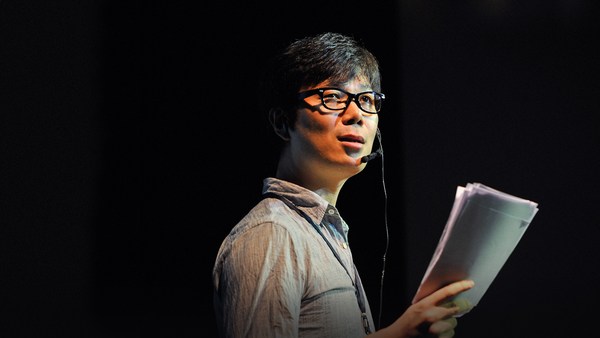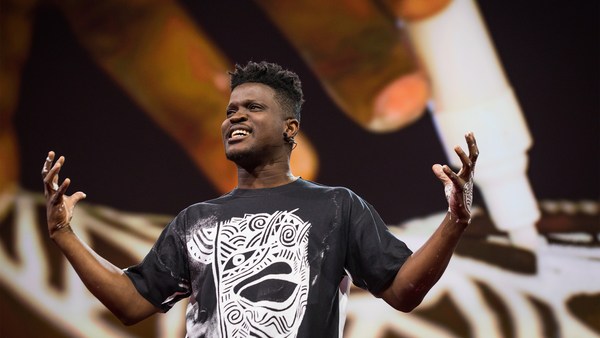I’m Jung-eun Lee, a potter making potteries with my husband Seung-il Park in Gyeongju. What we make is teacups, for drinking tea, and especially something called ’Cheonghwa Baekja”, namely blue and white pottery. Today, starting from introducing the brief history of Cheonghwa Baekja, I will share my troubles and experiences in dealing today’s subject, the lineage of technology. These are Cheonghwa Baekja teacups we made together. Cheonghwa Baekja was first born in the Yuan dynasty in the 14th century. Namely, in China. Later, it was introduced to Joseon and affected many countries in Asia such as Japan or Vietnam. The export of this oriental porcelain to Europe began in the 17th century. So, to export it, many contries in Asia accumulated technologies as well as wealth. At this time, Joseon went on a completly different path. As many of you know, a number of Korean potters were taken to Japan during the Japanese Invasion of Korea in 1592. The war had devastated the country’s finances and the national isolation policy had drastically reduced interaction with the outside world. By the late Joseon Dynasty, Japanese ceramics were being imported back to Joseon as an income. In addition, with the contempt for the Neo-confucianism that looked down on potters and the pottery techniques, in my opinion the lineage of the Joseon Cheonghwa Baekja technology is lost. Like I’ve mentioned earlier, The Europeans in the 17th century shelled out huge sums of money for these oriental blue porcelain. They didn’t stop there and started to develop technologies of their own And they have their first success was in the early 18th century, in Meissen, Germany. Different European countries create new technologies in their own way. Both my husband and I are majored in ceramic arts. We specialized in pottery. There are many branches in ceramic arts, and they all have different features. As we gained experience, we started to fear that even when we dedicated our lives to a field we could never get to the point where we wanted to be. So we decided to focus on just one field. And then we decided to make Baekja, white pottery, and especially, Cheonghwa Baekja. In that context, early on we were focused on how we could make something that feels similar to those in Museums. I thought it would be a way to continue lineage of the tradition at that time. However, as we continued working on it, we ran into a new question. Is it really continuing the legacy of tradition, simply recreating the past? We pondered the question. In our conversations The words “continuing traditional legacy” and “Korean” go hand in hand. What is “Korean”? what does it mean to continue the legacy of tradition? I’ve been making ceramics for 30 years, but I still ask these questions to myself over and over again. So a few years ago, A few years ago, I went to China to study. There was a particular reason why; as I learned more and more about Cheonghua Baekja, I realized that there are some things that are in China and Japan that Korea don’t have. Maybe those never reached Joseon in the first place. But maybe it came to Joseon, but it didn’t get passed on, so we don’t know. So first of all, I thought, I want to go study in the country where it started So I stayed in China for about a year and a half studying different techniques. I’d like to share a story when I was studying there. Jingdezhen, where I went to study is the city where China’s blue and white pottery was born. There is a famous ceramic institute there and also a professor whom I admire very much. I took his(her) lessons and because I admired him(her) so much I wanted to show him(her) the potteries that I made in Korea It was a small teacup, pretty much like this one in the picture. It was my early work of that. Let me explain a bit about that teacup. Nowadays we can easily buy ceramic colors just like ordinary paints at any art supply store, but I wanted a color of my own, so I made the colors myself using my own datas. I painted my pottery with those. My husband and I use a wood-fired kiln. As you can imagine, it’s a very laborious process. Compared to gas and electric kilns that are easy to use, it obviously has a different texture. The teacup had my own paintings with my colors on it So I was actually afraid to show it to the professor. When I handed the cup carefully, the professor’s reaction was surprising. He brought some students who were drawing around him and asked them to look at the teacup together, and he told me his thoughts. He told me the shape of the bowl, the glaze, the clay are not inferior to those of his country, namely China, and that the coloring of the pigments and the way of painting are creative. It was a huge relief to realize that the way I had been doing things wasn’t necessarily wrong, and actually I was quite intimidated because I was in a foreign country to learn skills. I felt like people looked down on me for no reason, I remember it as a moment of courage and renewed hope. And at that time, I had this one question. Have you ever seen any old Korean potteries that have fancy paintings of colors like pink, yellow, green, blue in the National Museum of Korea? No, probably not. However, there are many potteries with various colors in Japan or China But why won’t Korea have anything like that? I couldn’t find the answer in China, and when I came back to Korea, Whenever I met people who majored in history, I kept asking them similar questions, To summarize their answers, some say that the strong Confucian ideology of Joseon would have been unable to accept such fancy colors. and the time, pigments that produced them were extremely expensive. so Joseon probably didn’t had the financial means to afford it. But what about now? But now it’s a completely different age, isn’t it? So when I was in China I thought, Whatever, however the reason is When I go back to Korea, I must make those fancy colored potteries Because we don’t have anything like those, I should start making it from now on. That was one of the times I had those thoughts. But after I came back to Korea the years just flew by
So the thoughts were always in the back of my mind, but couldn’t do anything, then this spring, my husband and I had an exhibition together,
I showed some new paintings for a while. That fresh forsythia in this picture is the pattern that I exhibited then. Actually, the main character of the painting is a bird. There were two versions, and I wanted to draw a bird. After I finished designing the bird the way I usually do, I thought, “Oh, I need to do something for the background.” So I finished one by drawing plum blossoms the way I usually do, then I started to think about the other one. and I chose to draw a brighter, lighter painting. The main focus of my work is still Cheonghwa Baekja, and I feel like there are still so many steep mountains to climb on the way. But apart from that, I felt that I must continue to little by little, but try somthing new. If we had a tradition that had been passed down to us and new technologies had been changing and evolving like they have in other countries, would I have gone all the way to China to study? I’m almost 50 now. I’m starting to see people walking behind me on the path I’ve been on. I started to think that I might be able to suggest I’m trying to show what I couldn’t do, because I didn’t have and I didn’t know, even if it’s little. now that I’m older, these thoughts are coming out. On the other hand, there is something about characterisitc of ‘Baekamyo’ which is not common in Korea It’s the division of labor. We work in a division of labor. So the shaping work on the potter’s wheel is done by my husband, Seung-il Park. And then I’m in charge of the decorations, like painting the outside. this method can be found in the government-established pottery factories of Joseon era. IIn China, that tradition has been passed down. so in Jingdezhen today, probably has a more thorough division of labor than in the past. So I mean, in China, It’s not just the potter’s wheel and painting, but there’s also someone working on the kiln and someone applying glaze. There are even people carrying stuff between them. And it’s something that you can see not just in China, but also in many countries around the world. Through collaboration like this, we can create porcelain. For example, let’s take a look on this teacup we made, To make one teacup, It took my husband 30 years of hard work spinning the potter’s wheel. That 30 years of experience, combined with nearly 20 years of my hard work painting experience. Then how many years of experience does a single teacup have? Wouldn’t it be much longer than doing it alone? I’ve been thinking a lot lately that this might be one of the great strengths of Baekamyo. In comparison to this, what we should think about about is the general atmosphere of the Korean ceramics field. Among all of you, if you are interested in ceramic, you would know that we take it for granted that a single potter does all the process of making the ceramic. A lot of potters are doing all the process on their own. and the collectors and viewers, and we all regard that as natural. But why not bring that approach from the government-established Pottery Factories back to the present? Here, I’d like to briefly introduce one of Baekamyo’s representative patterns, Maehwamun, which was probably the most common theme in Joseon literati paintings. When I decided to draw Maehwamun for the first time I was inspired by old Korean paintings and that’s what you see up there. The old paintings based on confucian ideology have several things in common. When you draw a flower under the confucian ideology of Joseon, It should always depict the high peak of the flower. You might wonder why. Since falling flowers implied dying out I think in the Confucianist society people were reluctant to paint that. But for me, personally, the sight of the plum blossoms falling on a spring day was so touching. I wanted to capture that in a picture on a bowl. I think you can’t see it clearly in the picture, but I drew the petals just fluttering down one side of the bowl. What started out as old literati paintings, morphed into a painting of moments that touched me today, and for those who can relate to them. I applied a technique from Buncheong to Chunghwa Baekja. Let me explain about ‘Guiyalmun’, You can think of something like a broomstick where you use a very rough brush to force the pattern in one sweep. It’s one of the techniques of Buncheong. And I really like it. I love it, but I’ve only done white porcelain in my life and I started to worry, “What if I can’t use this,” so I started to use the technique on Chunghwa Baekja. Now I am actively working on it by combining various patterns. There are two korean sayings that are often quoted when we talk about tradition. ”Ongojisin” and “Beopgochangshin”. The common character in both sayings means “New” in chinese character. I think the key to these two sayings is not the old, but the new. As I talk about these old Chinese idioms, your expressions became really serious, I feel like an old fart. A long time ago, I’m sure our old fart ancestors also thought a lot about novelty. So, they might be able to get hints from the past thinking about how to make new things over and over again. So I think the reason why these two sayings came to be is in making something new. It’s not easy to define what constitutes the legacy of tradition. and to distill it down to a few representative examples would be not easy as well. There is a saying that you see as much as you know, and I believe this saying is true. As time goes by, through learning and experience, my understanding will continue to deepen, the answer to me will probably be new throughout my life. So I will probably spend my whole life searching to get the answer I want. Based on that exploration, I’m going to try to create new things. What I question here is, What exactly is the modern standard for something new? So I decided to use myself as the standard. That means I will use my current senses and desires as the standard. At the same time, this also means that I will not follow trends or the flow of the times. The new things I create are based on the old, but I want to pioneer them with myself as the standard. Let’s talk about the unfortunate reality. Despite our pride in our ceramic culture, Korean ceramics have a very small presence in the global ceramic market. When Westerners talk about the ceramics of the East Korea is far behind China and Japan. That’s why many Korean potters use motifs from Chinese, Japanese, or other countries as inspiration for their ceramics often when making their works. It’s a very unfortunate reality, but I also wonder if it’s because they didn’t have anything of ours to continue and emulate. What we are now will become tradition in years to come. If we could make our tradition richer and fuller, maybe our future generations will have more options to choose from than we do now. By the way, I have two children. They both love arts. So my older child is preparing for an art college entrance exam. But I guess the work that my husband and I do just seems too hard. He(She) has declared, that he(she)’s never going to do ceramics, but who knows, we can’t tell the future. As my children grew up and I started to see them walking behind me, I had this thought. I feel like people from my generation is crossing scattered stepping stones over a very wide stream. If the answer I’ve spent my whole life could add just one more stepping stone between the wide gaps, I wouldn’t want anything more. I hope that others can walk the path that I have walked so precariously and that they can take at least one step with confidence, joy, and strength. That is it for today, thank you. (Applause)





